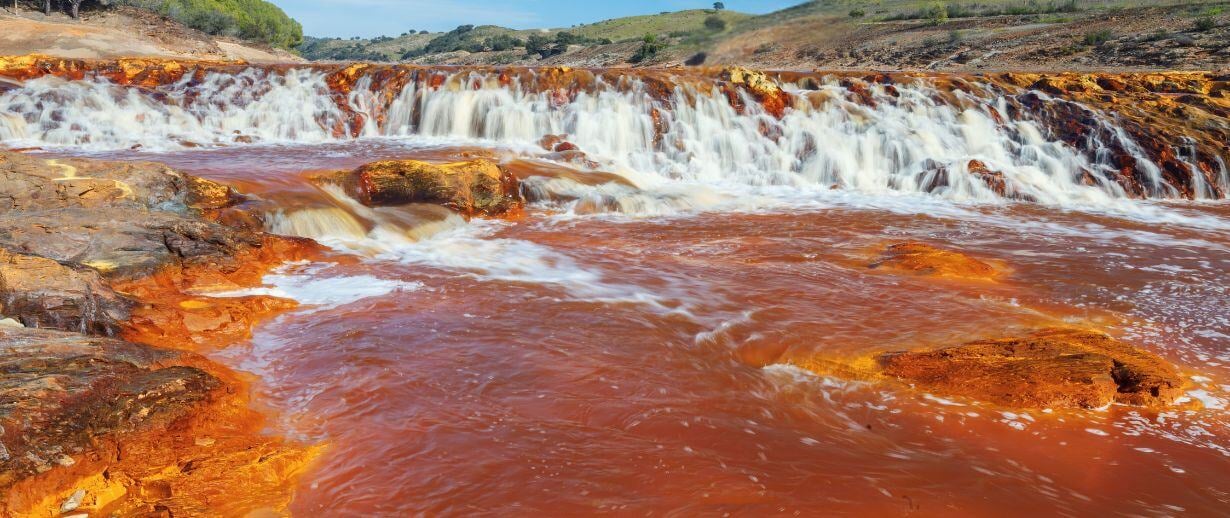Mine water management has become increasingly critical in modern mining operations, with a growing focus on environmental sustainability and resource efficiency. This blog explores the essential aspects of mine water recycling, specifically addressing iron removal with plant-based coagulant treatment processes.
What is Mine Water?
Mine water is contaminated water found in mining operations that typically contains elevated levels of dissolved iron and other contaminants. It accumulates in mines through various sources such as groundwater seepage, rainfall, or mining processes. This water requires treatment before it can be either recycled for mining operations or safely released into the environment, as it often contains high concentrations of dissolved metals (particularly iron), minerals, and other potentially harmful substances.
How do you treat Mine Water?
Mine water treatment through cascade aeration works by pumping contaminated mine water to an elevated position, then allowing it to flow down a stepped structure. As the water cascades down, it mixes with air (aeration), which oxidises dissolved iron, converting it to solid iron oxide particles. The water then passes through reed beds and settling lagoons, where the solid iron particles settle to the bottom as ochre (iron oxide/hydroxide deposits). The reed beds also help filter the water and provide additional treatment through biological processes. This passive treatment system effectively removes iron contamination from mine water before it's released into the environment.
Iron Removal in Mine Water

Mine water typically contains elevated levels of dissolved iron, which can lead to equipment deterioration, pipeline blockages, and significant environmental impacts if left untreated. Moreover, when this iron-rich water contacts oxygen, it forms unsightly orange-brown deposits that can devastate local ecosystems and waterways. Understanding and effectively managing iron removal is therefore not just an operational necessity, but an environmental imperative for modern mining operations. So, how can it be removed?
The primary methods for iron removal include:
- Oxidation and precipitation
- Biological treatment
- Membrane filtration
- Chemical precipitation
These processes convert soluble ferrous iron (Fe2+) to insoluble ferric iron (Fe3+), which can then be removed through settling or filtration.
Hydrex Plant-Based Coagulant Treatment
Our plant-based coagulant is an innovative chemical compound used in mine water treatment that offers several advantages:
- Effective metal ion removal
- Lower sludge production
- Cost-effective operation
- Environmental compatibility
Recycling Benefits
Implementing water recycling systems in mining operations provides numerous advantages:
- Reduced freshwater consumption
- Minimised environmental impact
- Compliance with regulations
- Cost savings
- Sustainable resource management
Best Practices to optimise mine water recycling:
- Regular monitoring of water quality
- Proper maintenance of treatment systems
- Integration of multiple treatment technologies
- Employee training
- Continuous process improvement
environmentally conscious solution, mining operations can achieve substantial economic benefits while maintaining strict regulatory compliance, ultimately paving the way for a more sustainable future in the mining industry.
How can we help you?
Would you like to learn more about how Veolia’s Hydrex plant-based coagulant can help with the operation of your process?
-
We can carry out an initial site survey and propose a solution.
-
Any trial work would be supported with the correct RAMS and jar testing to our own very high standards.
-
Our business development manager and effluent chemist will set up the full-scale trial.
Click here to contact an expert